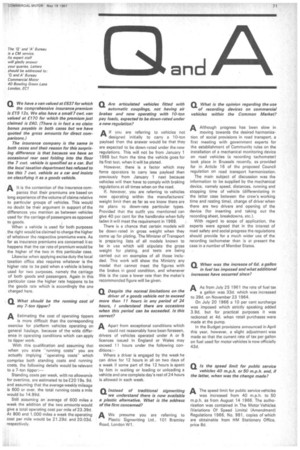Q We have a van valued at £637 for which
Page 73

If you've noticed an error in this article please click here to report it so we can fix it.
the comprehensive insurance premium is £19 12s. We also have a small 7 cwt. van valued at £170 for which the premium just claimed is £40. (There is in fact a no claim bonus payable in both cases but we have quoted the gross amounts for direct comparisons.) The insurance company is the same in both cases and their reason for this surprising difference is that because we have an occasional rear seat folding into the floor the 7 cwt. vehicle is specified as a car. But the local taxation department has refused to tax this 7 cwt. vehicle as a car and insists on classifying it as a goods vehicle.
AIt is the contention of the insurance corn
panics that their premiums are based on long experience of the volume of claims relative to particular groups of vehicles. This would no doubt be their argument in support of the differences you mention as between vehicles used for the carriage of passengers as opposed to goods.
When a vehicle is used for both purposes the right would be claimed to charge the higher of whatever the respective premiums were. As far as insurance premiums are concerned it so happens that the car rate of premium would be the higher of the two in this particular case.
Likewise when applying excise duty the local taxation office also requires whatever is the higher rate to be paid when a vehicle is being used for two purposes, namely the carriage of both goods and passengers. Again in this particular case the higher rate happens to be the goods rate which is accordingly the one charged here.




















































































































